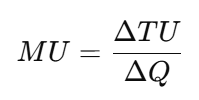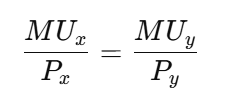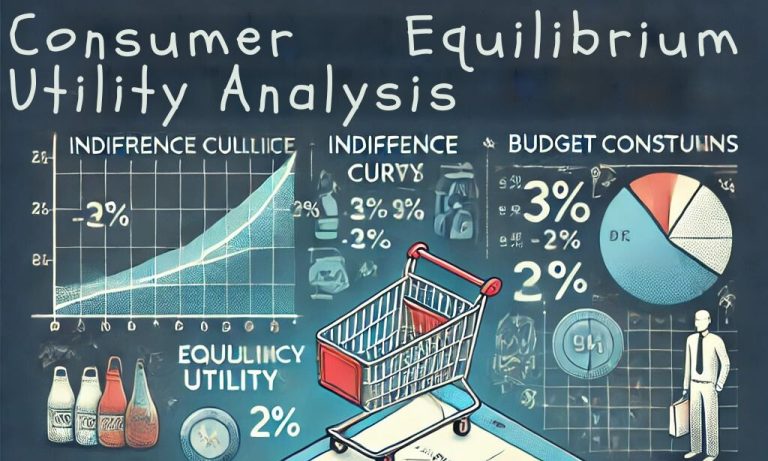Consumer equilibrium utility analysis is one of the cornerstones of microeconomic theory, explaining the amounts and directions in which individual discrete consumers allocate their limited resources to maximize satisfaction. Essentially, it focuses on the interplay between utility, budget constraint, and consumer choice. This lies on the basis that rational consumers aim to derive the highest possible utility, given their income and the prices of any good or service. Marginal utility principles will be applied to determine how income should be allocated between different goods to maximize satisfaction.
What is Consumer Equilibrium?
Consumer equilibrium is the state in which a consumer derives the greatest satisfaction possible with their budget. Here, the consumer would distribute money in such a way that no reallocation of expenditure can increase his/her overall satisfaction.
It is based on the utility-maximizing theory whereby consumers maximize the amount of utility derived from various goods within their means. Consumer equilibrium occurs when the marginal utility per unit of money spent on all goods is the same. Mathematically,

Where:
- MU is the marginal utility of a good.
- P is the price of the good.
- x,y,nx, y, n represent different goods.
For example, with a budget of ₹100, a consumer will buy apples and oranges priced ₹10 and ₹20, respectively. When the final ₹10 of expenditure on apples and oranges yields equal amounts of additional utility.
Marginal Utility Analysis
Marginal utility analysis lies at the core of a discussion regarding consumer equilibrium. The additional satisfaction obtained from the consumption of one extra unit of a good or service is termed a marginal utility. It points out the law of diminishing marginal utility, i.e., returning diminishing benefits from consuming more of the same good.
The concept of marginal utility explains a relationship between the increase in satisfaction and consumption, however in a decreasing rate. For instance, the first piece of pizza comes with extreme satisfaction; however, the fifth may be less rewarding.

Where:
- ΔTU is the change in total utility.
- ΔQ is the change in quantity consumed.
Law of Diminishing Marginal Utility
The law of Diminishing Marginal Utility says that the more a good is consumed, the less the additional satisfaction (MU) obtained from each unit. The principle of this law drives consumers to stop buying more units of a good the moment marginal utilities fall below the price.
Consumer Equilibrium
Consumer equilibrium occurs when a consumer devotes his budget in such a manner that the total satisfaction is maximized. This means having a marginal utility of one rupee spent on every commodity inequality.
Conditions for Consumer Equilibrium
- Equal Marginal Utility per Rupee Spent: Consumers reach equilibrium when:

This equality ensures the consumer derives the same satisfaction per rupee from all goods.
2. Exhaustion of Budget: Consumers must allocate their entire income without exceeding it. For instance, if a consumer has ₹100, their total expenditure on goods must sum to ₹100.
3. Rational Behavior: Consumers must act rationally, prioritizing goods that provide the highest satisfaction per unit of cost.
Relation Between Marginal Utility Analysis and Consumer Equilibrium
The concept of consumer equilibrium is founded on marginal utility analysis. Comparing the marginal utility of various goods vis-a-vis their prices enables consumers to determine the distribution of their income effectively.
Utility Maximization and Budget Constraints
The utility maximization approach combines marginal utility analysis with budgetary constraints. For the consumer, it means that equilibrium is achieved where the combination of goods chosen would maximize total utility while being within a given budget.
Example Problem
- Budget: ₹60
- Goods: Bread (₹10 per loaf), Butter (₹20 per pack)
- Marginal utility schedules provided:
| Units of Bread | MU (Bread) | MU/P (Bread) | Units of Butter | MU (Butter) | MU/P (Butter) |
|---|---|---|---|---|---|
| 1 | 50 | 5.0 | 1 | 80 | 4.0 |
| 2 | 40 | 4.0 | 2 | 60 | 3.0 |
Solution:
The consumer initially buys 1 loaf of bread and 1 pack of butter, but upon reassessing the MU/P ratios, adjusts to 3 loaves of bread and 1 pack of butter.
Implications for Pricing and Demand
Marginal utility analysis and consumer equilibrium are related. Any relationship between the two explains how consumers react to price changes. When the price of a good increases, its MU/P ratio decreases, and consumers therefore consume less of it and more of substitutes.
Consumer Equilibrium Utility Analysis FAQs
What is consumer equilibrium utility analysis?
Consumer equilibrium utility analysis examines how individuals allocate their income to maximize satisfaction, given their budget constraints and the prices of goods.
Why does diminishing marginal utility affect consumption?
Diminishing marginal utility reduces the additional satisfaction from consuming extra units of a good, prompting consumers to diversify their spending across multiple goods.
How do price changes impact consumer equilibrium?
Price changes alter the marginal utility per rupee spent on a good, leading consumers to adjust their spending patterns to maintain equilibrium.
Is consumer equilibrium static?
No, consumer equilibrium is dynamic. It changes with fluctuations in income, preferences, and prices.
Why is the MU/PMU/P ratio significant?
The MU/PMU/P ratio helps consumers determine which goods provide the highest satisfaction for their cost, guiding efficient allocation of resources.


